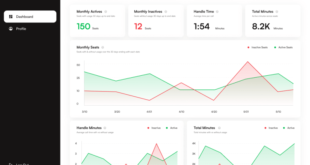
Join our daily and weekly newsletters for the latest updates and exclusive content on industry-leading AI coverage. Learn More
Modern organizations are acutely aware of the need to effectively leverage generative AI to improve business operations and product competitiveness. According to research from Forrester, 85% of companies are experimenting with gen AI, and a KPMG U.S. study found that 65% of executives believe it will have, “a high or extremely high impact on their organization in the next three to five years, far above every other emerging technology.”
As with any new technology, the adoption and implementation of gen AI will undoubtedly pose challenges. Many organizations are already contending with tight budgets, overloaded teams and fewer resources; therefore businesses must be especially strategic as it pertains to gen AI onboarding.
One critical (yet oftentimes overlooked) facet to gen AI success is the people behind the technology in these projects and the dynamics that exist between them. To derive maximum value from the technology, organizations should form teams that combine the domain-specific knowledge of AI-native talent with the practical, hands-on experience of IT veterans. By nature, these teams often span different generations, disparate skill sets, and varying levels of business understanding.
Ensuring that AI experts and business technologists work together effectively is paramount, and will determine the success — or the shortcomings — of a company’s gen AI initiatives. Below, we’ll explore how these roles move the needle when it comes to the technology, and how they can best collaborate to drive positive business outcomes.
The role of IT veterans and AI-native talent in gen AI success
On average, 31% of an organization’s technology is made up of legacy systems. The more tenured, successful and complex a business is, the more likely that there is a large footprint of technology which was first introduced at least a decade ago.
Realizing the business promise of any new technology — including gen AI—hinges on an organization’s ability to first harvest the maximum amount of value from those existing investments. Doing so requires a high degree of contextual knowledge about the business; the likes of which only IT veterans possess. Their experience in legacy system management, coupled with a deep understanding of the business, creates the optimal environment for embedding gen AI into products and workflows while simultaneously upholding the company’s forward momentum.
Data science graduates and AI-native talent also bring critical skills to the table; namely proficiency in working with AI tools and the data engineering skills necessary to render those tools impactful. They have an in-depth understanding of how to apply AI techniques — whether that’s natural language processing (NLP), anomaly detection, predictive analytics or some other application — to an organization’s data. Perhaps most importantly, they understand which data should be applied to these tools, and they have the technical know-how to transform it so that it is consumable for said tools.
There are a few challenges organizations may experience as they incorporate new AI talent with their existing enterprise professionals. Below, we’ll explore these potential hurdles and how to mitigate them.
Making room for gen AI
The primary challenge organizations can expect to encounter as they create these new teams is resource scarcity. IT teams are already overloaded with the task of keeping existing systems running at optimal performance — asking them to reimagine their entire technology landscape to make room for gen AI is a tall order.
It could be tempting to sequester gen AI teams due to this lack of labor capacity, but then organizations run the risk of difficulty integrating the technology into their core application stacks down the line. Companies can’t expect to make meaningful strides with gen AI by isolating PhDs in a corner office that is disconnected from the business — it’s vital these teams work in tandem.
Organizations may need to adjust their expectations in the face of these changes: It would be unreasonable to expect IT to uphold its existing priorities while simultaneously learning to work with new team members and educating them on the business side of the equation. Companies will likely need to make some hard decisions around cutting and consolidating previous investments to create capacity from within for new gen AI initiatives.
Getting clear on the problem
When bringing on any new technology, it is essential to be exceedingly clear about the problem space. Teams must be in total agreement regarding the problem they’re solving, the outcome they’re seeking to achieve and what levers are required to unlock that outcome. They also need to be aligned on what the impediments between those levers are, and what will be required to overcome them.
An effective way to get teams on the same page is by creating an outcome map which clearly links the target outcome to supporting levers and impediments to ensure alignment of resources and expectation clarity on deliverables. In addition to covering the factors above, the outcome map should also address how each aspect will be measured in order to hold the team accountable to business impact via measurable metrics.
By drilling into the problem space instead of speculating about possible solutions, companies can avoid potential failures and excessive rework after the fact. This can be likened to the wasted investments observed during the big data boom about a decade ago: There was a notion that companies could simply apply big data and analytics tools to their enterprise data and the data would reveal opportunities to them. This unfortunately turned out to be a fallacy, but the companies that took the time and care to deeply understand their problem space before applying these new technologies were able to unlock unprecedented value — and the same will be true for gen AI.
Enhancing understanding
There’s a growing trend of IT professionals continuing their education to gain data science skills and more effectively drive gen AI initiatives within their organization; myself being one of them.
Today’s data science graduate programs are designed to simultaneously meet the needs of new college graduates, mid-career professionals and senior executives. They also provide the added benefit of improved understanding and collaboration between IT veterans and AI-native talent in the workplace.
As a recent graduate of UC Berkeley’s School of Information, the majority of my cohort were mid-career professionals, a handful were C-level executives and the remainder were fresh from undergrad. While not a requisite for gen AI success, these programs provide an excellent opportunity for established IT professionals to learn more about the technical data science concepts that will power gen AI within their organizations.
Like each of its technological predecessors, gen AI is creating both new opportunities and challenges. Bridging the generational and knowledge gaps that exist between veteran IT professionals and new AI talent requires an intentional strategy. By considering the advice above, companies can set themselves up for success and drive the next wave of gen AI innovation within their organizations.
Jeremiah Stone is CTO of SnapLogic.
DataDecisionMakers
Welcome to the VentureBeat community!
DataDecisionMakers is where experts, including the technical people doing data work, can share data-related insights and innovation.
If you want to read about cutting-edge ideas and up-to-date information, best practices, and the future of data and data tech, join us at DataDecisionMakers.
You might even consider contributing an article of your own!



